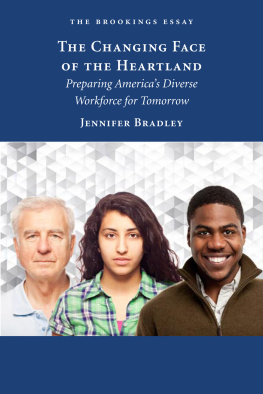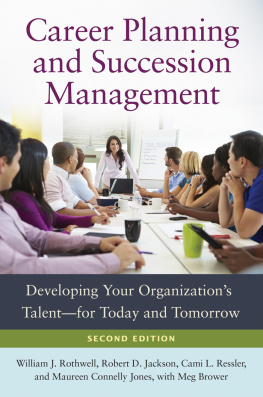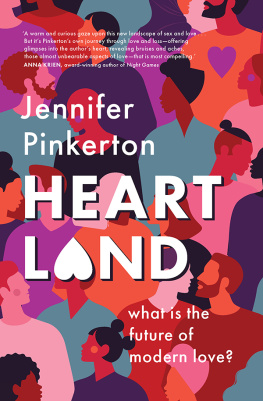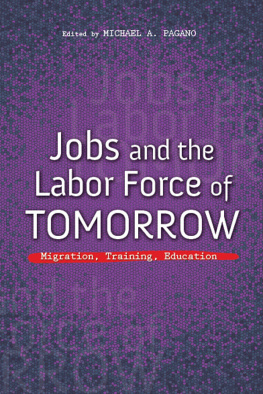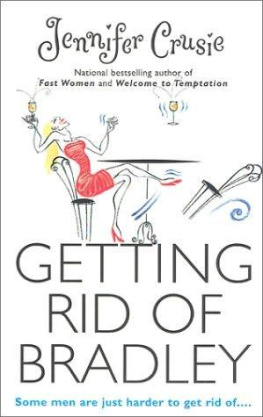THE BROOKINGS ESSAY
In the spirit of its commitment to high-quality, independent research, the Brookings Institution has commissioned works on major topics of public policy by distinguished authors, including Brookings scholars. The Brookings Essay is a multi-platform product aimed to engage readers in open dialogue and debate. The views expressed, however, are solely those of the author.
You can access the entire Brookings Essay series online at
www.brookings.edu/essay
Copyright 2015
THE BROOKINGS INSTITUTION
1775 Massachusetts Avenue, N.W., Washington, DC 20036.
www.brookings.edu
All rights reserved. No part of this publication may be reproduced or transmitted in any form or by any means without permission in writing from the Brookings Institution Press.
ISBN 978-0-8157-2673-9 (ebook)
Cover photographs iStock.com/drbimages and iStock.com/alvarez
MINNESOTA AND THE SURROUNDING STATES of the upper Midwest are experiencing a demographic revolution. Yet that fact and its significance are just beginning to sink in, which is why many residents of the greater MinneapolisSt. Paul area, whatever their own ethnicity, still refer to their community matter-of-factly as lily white. And while its true that with a 78 percent Caucasian population the Twin Cities are still far less ethnically diverse than other parts of the United Statesamong them the far West and Southeast as well as gateway cities and multicultural hubs like New York, Los Angeles, Chicago, Houston, San Francisco, and Miamiits also becoming less true with every passing year. One big reason: immigration.
Insofar as we associate Minnesota with immigration at all, its because of the influx of Scandinavians and Germans during the 19th century (think of all those Norwegian bachelor farmers in Lake Wobegon). But Minnesotans now come from a surprisingly wide array of countries and communities, and these more recent immigrants tend to be people of color rather than whites. As former Minneapolis mayor R.T. Rybak says, Our diversity is more diverse than many other places because the state in general, and Minneapolis-St. Paul in particular, have been hubs of refugee resettlement for decades. The region has twice the share of immigrants from Southeast Asia as the United States as a whole (21 percent versus 10 percent of the immigrant population), and five times the share of immigrants from Africa as the nation as a whole (21 percent versus 4 percent).
Minnesota is home to Mexicans, Hmong, Indians, Vietnamese, Somalis, Liberians, and Ethiopians. Its people of color also include American-born Native Americans, Hispanics, Asians, and African-Americans. According to the State Demographic Center, the Asian, black, and Hispanic populations in the state tripled between 1990 and 2010, while the white population grew by less than 10 percent. This trend will continue: From 2010 to 2030, the number of people of color is expected to grow twice as quickly as the number of whites. As Minnesota and the region go, so goes the nation, which is also becoming ever more diversified, with an overall decline in the percentage of whites and increase in people of color.
At the same time that its overall ethnic and racial makeup is changing, Minneapolis and St. Paul are feeling the effects of another shift, vividly described by William H. Frey in his new book, Diversity Explosion, and again one that is occurring throughout the nation: The aging of the generation of Americans born after World War II, who were predominantly white.
These two demographic shifts have huge implications for how both the private and public sectors in Minnesotaand elsewhereallocate their resources and make decisions about education, training, and hiring. The challenge will be to make sure that as the baby boomers retire and their jobs open up to a more diverse workforce, the young people in that workforce are ready to fill those jobs.
HISTORY OF REFUGEE RESETTLEMENT
Minnesota and Minneapolis-St. Paul have high numbers of African and Southeast Asian immigrants largely because of their exceptionally active refugee resettlement voluntary agencies, including Lutheran Social Services, Catholic Charities, and World Relief Minnesota. These agencies participate in an intricate process of resettlement by which refugees are assigned to cities and towns by the federal Office of Refugee Resettlement. The office also provides funds to agencies to enable them to help refugees establish themselves in their new communities. In the late 1970s, Minnesota welcomed Southeast Asian refugees, many of them Hmong people from Laos and Vietnam displaced by the Vietnam War. As the Hmong community in the Twin Cities took root, Hmong living in other cities in the U.S. moved to join what has become one of the largest Hmong communities in the country, comprising about 66,000 people. In the 2000s, refugees from sub-Saharan Africa were resettled in the state and the region. There are about 76,000 African-born blacks in Minnesota, with the majority coming from Somalia, Ethiopia, and Liberia.
Sources: Katherine Fennelly, Latinos, Africans and Asians in the North Star State: Immigrant Communities in Minnesota, in Beyond the Gateway: Immigrants in a Changing America, Elzbieta M. Gozdziak and Susan F. Martin, eds. (Lexington Books, March 2005) and From There to Here: Refugee Resettlement in Metropolitan America (Brookings Institution, 2006)
With most of the future growth in the labor force coming from people of color, its alarming to have to acknowledge how profoundly the existing education and training systems have failed them. Statewide, 85 percent of whites graduated from high school on time in 2013, compared to 58 percent of Hispanics, 57 percent of blacks (including both U.S.-born African-Americans and African immigrants), and fewer than half (49 percent) of American Indians. The gaps are slightly larger at the metropolitan level, and wrenching for the largest city, Minneapolis, where just 51 percent of Africans, 41 percent of Hispanics, 40 percent of African-Americans, and 34 percent of American Indians graduate from public schools on time.
The employment gap is appalling, too. Seventy-nine percent of working-age whites in the Twin Cities are employed compared to 65 percent of working-age people of colorthe largest such gap in the country. Unless it can shake these dubious distinctions, the region and the state as a whole will not have a sufficiently skilled workforce to maintain, much less grow, its economy. That could have potentially disastrous results. The region is home to 18 Fortune 500 companies, including 3M, Medtronic, General Mills, Pillsbury, and Honeywell. If the local workforce cannot meet the needs of these and other companies in the next five to ten years, which is when the state demographic office foresees labor shortages beginning to take effect, they may decide to move to regions that have a bigger pool of qualified workers.
This looming crisis should come as no surprise. Reports dating back as far as the 1990s and early 2000s have repeatedly warned that the education and employment gaps would become a drag on workforce growth and, as a result, on economic growth unless something was done to reverse these trends. Yet little was done, and the gaps persisted.
The lag between awareness and action is partly attributable to complacency. The state has long taken pride in its progressive politics, its iconic-brand companies, and what has, for decades, been the states distinctive advantagea highly skilled workforce. Minnesotans were further lulled by the effects of the Great Recession of 2007-09, when the problem was a scarcity of jobs, not of workers. With a recovery underway, however, Minnesotans have begun to understand that the existing labor pool will soon be insufficient. And this recognition has helped reframe the conversation about race-based education and achievement gaps in Minneapolis-St. Paulturning what had been a moral (and insufficiently effective) commitment to its underserved communities into an economic necessity. Leading figures from the worlds of government, business, and academia, and public and private groups throughout the region, are now trying to figure out how to undo the effects of decades of neglect, tackling the problem from many perspectives and with an ever greater sense of urgency.

